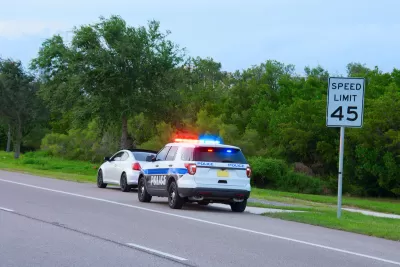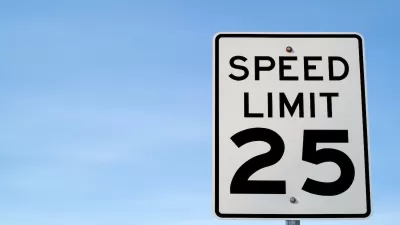Drivers sometimes defend speeding by arguing that it is safe as long as other drivers are also speeding. This argument only makes sense in the context of a limited-access highway.

As street safety advocates have repeatedly pointed out, speed kills: in particular, a pedestrian struck by a car going 40 miles per hour is far more likely to die than one struck by a car going 20 miles per hour.
But I’m not sure how many motorists realize this. A common perspective was once stated by a relative of mine: “Speeding isn’t dangerous. What’s dangerous is when one person is going more slowly than everyone else.” For example, when other drivers are going 60 miles per hour, and one person is going only 30 miles per hour, the fast drivers might be more likely to rear-end the slow driver, because they are expecting the slow driver to go at their speed. Thus, fatalities are least likely when everyone is driving 60 miles per hour.
This argument might make sense in the context of a limited-access highway. On such a highway, it is reasonable for a driver to expect all road users to be traveling at roughly the speed limit (or maybe even a little faster). Moreover, a lower speed limit might have fairly modest safety benefits, because even a motorist struck by someone going slowly by highway standards (that is, 40 or 50 miles per hour) is still reasonably likely to die or be seriously injured.
By contrast, other types of streets are full of slow-moving, vulnerable road users: not just pedestrians and cyclists, but also cars that are slowly turning into a store or intersection, or cars stopped waiting for a light to change or waiting to yield to oncoming traffic. In such a situation, it is not practical to expect everyone to go the same speed, and a reasonable driver would be aware of this fact. It logically follows that on regular streets full of walkers and stopped cars, speed kills: that is, a street where drivers go 40 miles per hour is likely to be the site of far more death and injury than a street with slower traffic.

Maui's Vacation Rental Debate Turns Ugly
Verbal attacks, misinformation campaigns and fistfights plague a high-stakes debate to convert thousands of vacation rentals into long-term housing.

Planetizen Federal Action Tracker
A weekly monitor of how Trump’s orders and actions are impacting planners and planning in America.

Chicago’s Ghost Rails
Just beneath the surface of the modern city lie the remnants of its expansive early 20th-century streetcar system.

Bend, Oregon Zoning Reforms Prioritize Small-Scale Housing
The city altered its zoning code to allow multi-family housing and eliminated parking mandates citywide.

Amtrak Cutting Jobs, Funding to High-Speed Rail
The agency plans to cut 10 percent of its workforce and has confirmed it will not fund new high-speed rail projects.

LA Denies Basic Services to Unhoused Residents
The city has repeatedly failed to respond to requests for trash pickup at encampment sites, and eliminated a program that provided mobile showers and toilets.
Urban Design for Planners 1: Software Tools
This six-course series explores essential urban design concepts using open source software and equips planners with the tools they need to participate fully in the urban design process.
Planning for Universal Design
Learn the tools for implementing Universal Design in planning regulations.
planning NEXT
Appalachian Highlands Housing Partners
Mpact (founded as Rail~Volution)
City of Camden Redevelopment Agency
City of Astoria
City of Portland
City of Laramie






























